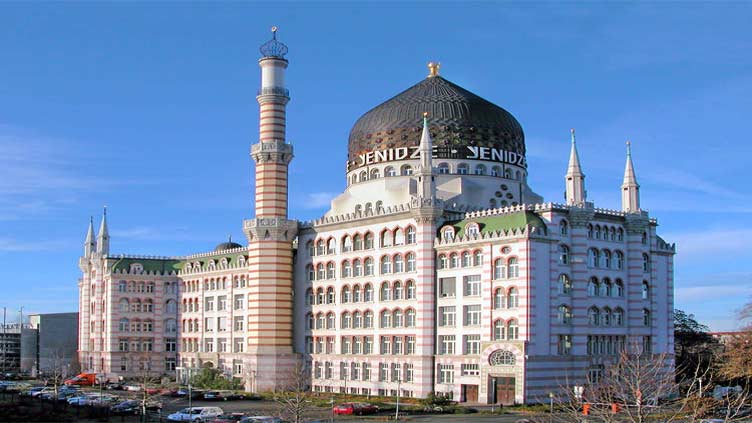Dresden's massive Tobacco Mosque – A story of deception

WeirdNews
A restaurant is being run in its large dome to enjoy a 360-degree scenic view
GERMANY (Web Desk) - It operates as an office facility with a restaurant set up in its large dome, where patrons can enjoy a 360-degree view of Dresden.
The German city of Dresden is famous for the Baroque architecture that runs along the banks of the Elbe River, but there is one exception that stands out like a sore thumb – the iconic Yenidze building, aka the ‘tobacco mosque’.
Featuring clear oriental architectural elements of mosques and the famous Alhambra Palace of Granada, the Yenidze has been towering over Dresden’s Friedrichstadt neighborhood for over a century.
At 62 meters (203 ft) tall, featuring 600 windows of various styles, and boasting an impressive glass dome, it would be one of the largest mosques in the world, but despite its appearance, the Yenidze is not, and has never been a mosque.
For most of its existence, the Yenidze has operated as a tobacco factory and its unusual design was chosen both as homage to the Oriental origin of the tobacco processed here, but also a clever way to vend the rules on architectural restrictions in Dresden’s city center.
Jewish entrepreneur Hugo Zietz originally set up his company, Oriental Tobacco and Cigarette Factory Yenidze, in 1886, but due to strict architectural restrictions regarding the construction of factories in central Dresden, he found it extremely difficult to build a production facility in the area.
After two decades of failed attempts to persuade the local government, Ziets decided he was better off bending the rules.
In 1907, the Jewish businessman commissioned 29-year-old architect Martin Hammitzsch to design a factory that didn’t really look like one.
The construction was inspired by the Mamluk tombs in the Cairo Necropolis, with red and grey granite blocks to recreate the stripes of ablaq masonry, colorful mosaics and Moorish geometric patterns, and even chimneys designed like minarets.
It wasn’t all smooth sailing, though, as many architects view the factory as a stain on the city’s famous baroque history that had earned Dresden the nickname ‘Florence on the Elbe’.
The backlash was so severe that Martin Hammitzsch was excluded from the chamber of architects after he submitted his draft and the city council threatened to reject Ziets construction permit. But then he threatened to move his business somewhere else, and the local authorities backed off.
By 1909, the Yenidze Tobacco Factory was complete and even featured the illuminated words ‘Salem Aleikum’ — ‘peace be upon you’ in Arabic — on the side for train passengers commuting by.
Soon, the “Salem Aleikum” and “Salem Gold” cigarette brands became some of the most popular in Germany and the factory became known as the ‘tobacco mosque’ because of its distinctive look.
The architecture of the Yenidze building has always been the subject of controversy in Dresden, as some still see it as kitschy, at least when compared to the city’s many Baroque masterpieces, but today it is at least considered an integral part of the city’s landscape.
That is quite the success story, considering that it miraculously survived the carpet bombing of 1945, during World War 2.
15 years after its inauguration, the tobacco mosque was sold to the Reemtsma Tobacco Group, which operated it until 1953.
It sat in isolation for several decades until being completely restored in 1996.
The building is currently owned by the Berlin-based EB Group, after being bought in 2014 from Israeli millionaire Adi Keizman. It operates as an office facility with a restaurant set up in its large dome, where patrons can enjoy a 360-degree view of Dresden.


